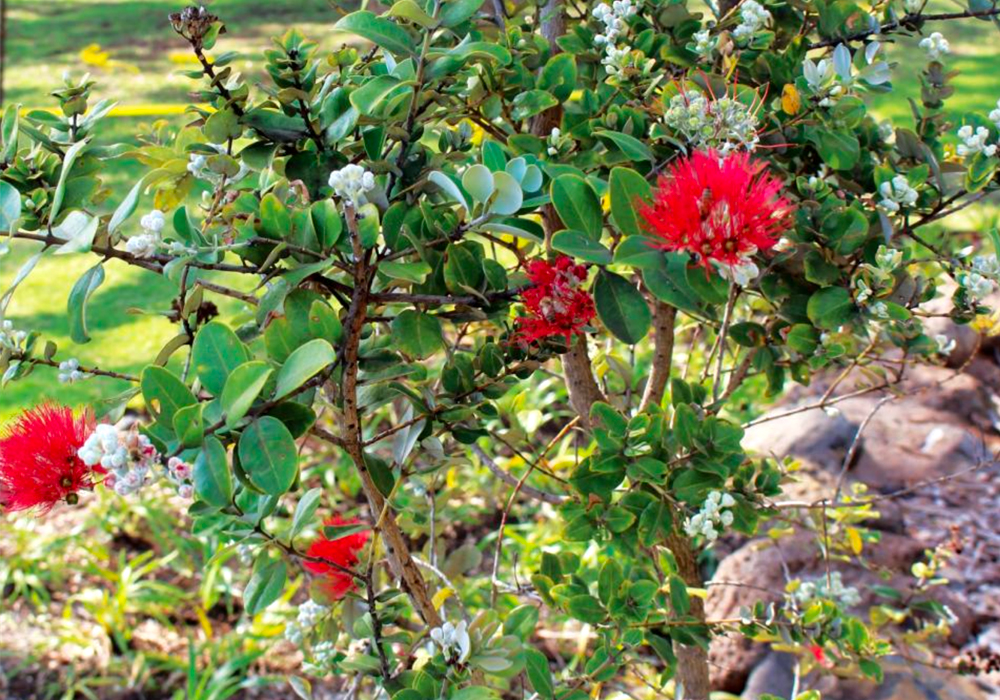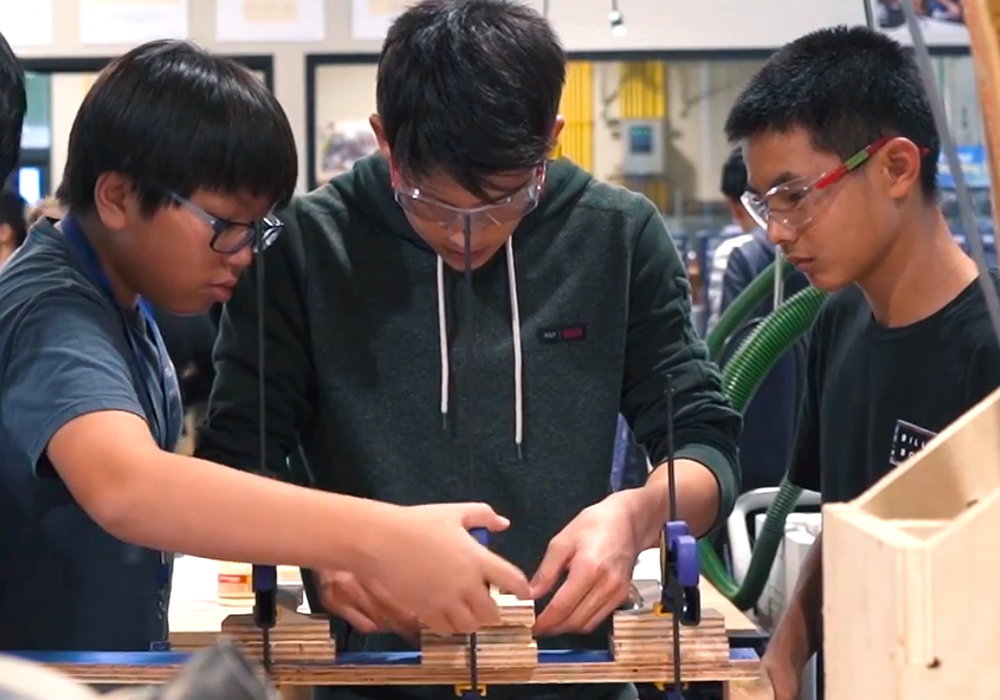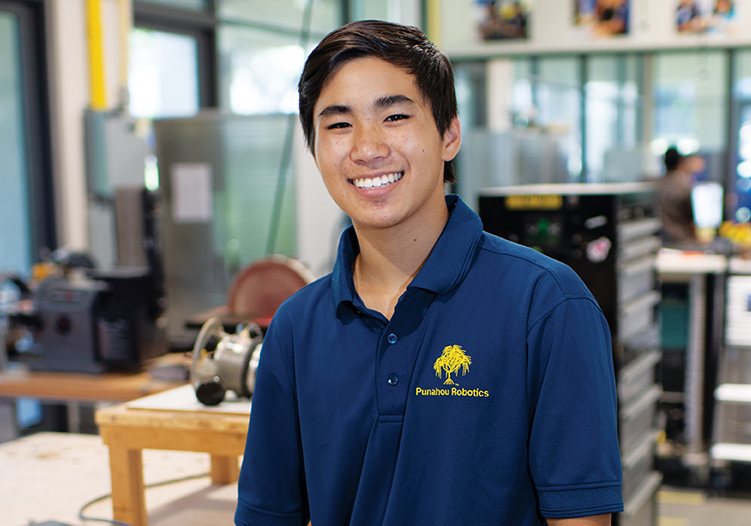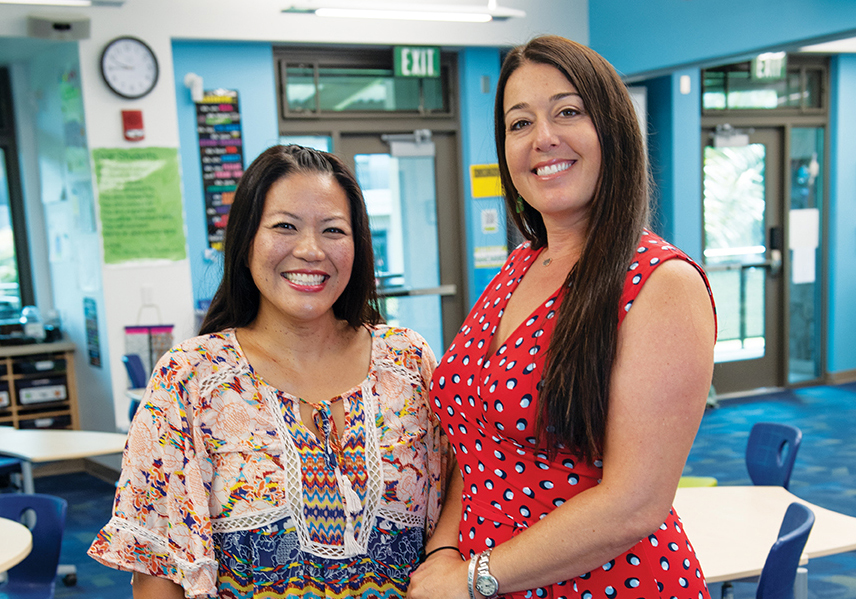
Since the opening of the first half of Sidney and Minnie Kosasa Community for Grades 2 – 5, the young plants surrounding the buildings have flourished. The ground cover, shrubs and trees provide children with a native plant forest to explore and play in. Native plants also contribute towards the community’s conservation of resources as they require less water when planted in the microclimate they are adapted to.
Now, students and adults alike can learn more about the plants in the community through the Kosasa Field Guide created by Outdoor Education teachers. “We wanted to make a tool to help students, teachers and visitors learn about and appreciate the baby native forest,” said Shelby Ho ’01, who created most of the content for the photo-rich guide.
Every classroom in grades 2 – 3 has a copy of the guide, which has been integrated into the Hawaiian history and culture curriculum of third-grade.
“There is an environmental importance and culture importance of native plants. When you have an understanding of where a plant is best suited and where it can thrive, it will be less resource intensive.
“Culturally, native plants are significant because there are so many current and ancient uses for them. Hawaiian culture is linked to the land, so having students play among the plants is good for them to get to know the different species, and not just from a book,” Ho explained.
Among the beautiful collection is the hō’awa. The plant is particularly reliant on the ‘Alalā (Hawaiian Crow) for seed dispersal and germination as the bird is able to remove the tough part of the fruit to get at the seeds. As a result, hō’awa are infrequently found in the wild now that the Hawaiian crow is rare, though reintroduction programs are underway.
“This is a perfect example of the interdependency of Hawaiian plants and animals in the ecosystem, and students can learn that by visiting the garden here,” said Ho.



